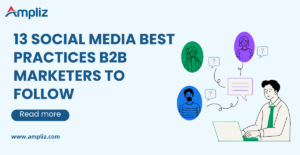Client onboarding has long been a frustrating bottleneck. The excitement of signing a new deal is often followed by a dull thud—the standardized onboarding process that treats every new client the same. It’s like getting invited to a party and then being handed a numbered ticket and pointed to your seat. For companies that pride themselves on value and precision, this one-size-fits-all approach just doesn’t cut it anymore.
The shift is happening. Fast-growing digital agencies, SaaS platforms, and B2B service firms are rethinking how they welcome clients. The answer isn’t more forms, more emails, or more PDFs. It’s smarter workflows. It’s onboarding built not just for efficiency, but for genuine engagement. And at the heart of this change? Interactive assessments.
Why Traditional Onboarding Breaks Down Fast
When onboarding becomes a checklist, it’s easy to overlook who you’re actually serving. Many companies implement templated sequences—standard emails, linear steps, generic videos—without ever asking, “What matters most to this client?” The result? Clients either disengage or feel overwhelmed. Often both.
The Homogeneity Problem
Traditional onboarding fails because it assumes homogeneity. But no two clients walk in with the same context, goals, or challenges. One might be migrating from a legacy system. Another might be scaling for rapid growth. A third might be in discovery mode, unsure what they really need yet. Dumping all three into the same flow ignores those vital differences.
Worse, these missteps aren’t invisible. Clients can feel when they’re being pushed through a machine. Engagement drops, satisfaction declines, and churn follows not long after. The stakes are higher than they seem. According to some studies, poor onboarding accounts for nearly a quarter of customer attrition in B2B environments.
And yet, the solution doesn’t require building hundreds of onboarding tracks. It’s about capturing the right information—early—and letting that data do the heavy lifting.
The Power of Interactive Assessments
Interactive assessments offer something static forms can’t: nuance. They ask meaningful, guided questions, not just to collect data, but to understand context. They turn onboarding from a process into a conversation. When used right, they reveal exactly what your client needs, where they’re starting from, and how to guide them forward.
Let’s say a SaaS company offers a platform for marketing automation. Instead of forcing every user into a generic onboarding tour, they open with a short interactive quiz: “What are your marketing goals?” “Which channels do you currently use?” “How large is your team?” Based on responses, the onboarding adapts. A solo founder with no prior tools gets a simplified, foundational walkthrough. An enterprise team with CRM integrations gets an API-first roadmap.
These assessments become the brain of onboarding. The questions might feel casual—almost fun—but under the hood, they’re segmenting users into specific cohorts, identifying friction points, and offering value fast. And the faster you prove relevance, the quicker clients move from sign-up to success.
There’s also a psychological benefit. When clients feel like the process is tailored to them, they’re more invested. Answering thoughtful questions builds trust. It shows you’re listening. It makes them feel seen.
Automating the Follow-Up: Welcome Kits and Personal Roadmaps
What happens after an assessment is just as important as the assessment itself. Once a client finishes answering questions, the system should immediately deliver value. This is where automation becomes magical—not mechanical.
Practical Application
For example, a digital agency might use answers from a pre-kickoff assessment to generate a personalized welcome kit. Instead of sending a PDF full of boilerplate, the kit includes a roadmap specific to the client’s industry, goals, and marketing maturity. Timelines, team intros, and suggested priorities are all adjusted automatically.
You don’t need a massive team or complex infrastructure to pull this off. With lightweight automation tools, including PDF generators, companies can spin up sleek, customized documents in seconds. Options that represent a cost-effective alternative to Adobe Acrobat, with none of the bloated interfaces or complicated workflows.
Think beyond just documents, too. Integration with your CRM or project management system can auto-create task lists, set kickoff calls, or send invites to tailored onboarding webinars—all based on how a client answered their initial assessment.
This kind of responsive onboarding isn’t just impressive—it’s operationally efficient. Your team spends less time on manual setup, and clients hit the ground running with confidence.
Real-Time Feedback Loops and Adaptive Onboarding
The beauty of interactive assessments is that they aren’t a one-time event. They can evolve. They can follow your client through their journey, checking in at milestone moments, adjusting guidance in real time.
Ongoing Engagement
For instance, after a client completes their first campaign or integration, a follow-up assessment might ask, “How did that go?” and “Where are you still stuck?” Based on those answers, new learning modules or check-ins can be triggered. The onboarding doesn’t just end—it transforms into a support journey.
This feedback loop helps teams anticipate needs instead of reacting to problems. It also feeds into your larger product or service strategy. Patterns begin to emerge: maybe new clients from a certain industry always struggle with the same step. That insight can lead to better onboarding materials, smarter product design, or even preemptive support tickets.
Dynamic onboarding gives clients a sense of momentum. They’re not just being pushed forward—they’re actively guiding their own progress. And every interaction adds to your intelligence about them, making future interactions even sharper.
From Personalization to Partnership
At its best, onboarding isn’t just a phase—it’s the beginning of a partnership. It’s a moment where clients decide whether this new relationship will be valuable, whether they can trust your process, and whether you truly understand their needs. Interactive assessments offer a gateway into deeper, more meaningful connections.
They give companies the chance to say, “We care enough to ask the right questions.” And they let clients respond with clarity, with purpose, with intent. The ripple effect is massive: better onboarding leads to faster activation, higher satisfaction, and longer retention. Clients who feel understood are far more likely to stay engaged, advocate for your brand, and grow with your services over time.
Suggestions to Deepen the Relationship
To turn personalization into true partnership, consider embedding practices that stretch beyond the onboarding window. Think about ways to re-engage clients regularly, keep tabs on their evolving goals, and turn every interaction into a chance to reaffirm value. A few helpful starting points:
- Set up recurring check-in assessments: Trigger these after major product milestones or quarterly intervals to keep the dialogue fresh.
- Create dynamic dashboards: Let clients see their own progress based on their inputs and achievements, reinforcing a sense of ownership.
- Build a feedback-to-feature loop: Show clients how their onboarding feedback directly shapes new features or service updates.
- Offer optional micro-onboarding for new tools: As your product grows, introduce new features with bite-sized, personalized onboarding paths.
These steps may seem simple, but they speak volumes. When onboarding flows evolve into living conversations, that’s when clients stop feeling like accounts—and start feeling like allies.
The Welcome Redefined
Imagine a world where onboarding feels like opening a gift. Every step reveals something relevant. Every email, every document, and every conversation is one step closer to clarity. That’s what personalization makes possible—not as a buzzword, but as a lived experience.
Interactive assessments are just the entry point. What follows is a journey that feels intuitive, custom-built, and surprisingly human. And in a space crowded with sameness, that’s the edge companies need.
So maybe it’s time to rethink how you greet new clients. Not with another template, not with another form—but with questions that matter, answers that shape action, and flows that adapt like a seasoned guide.
Because in the end, personalization isn’t about showing off. It’s about showing up—uniquely, intelligently, and with real intent.



